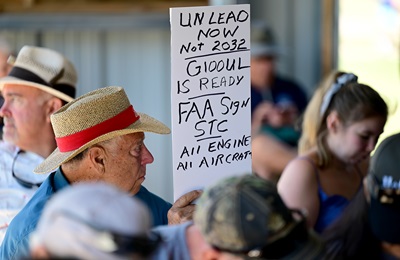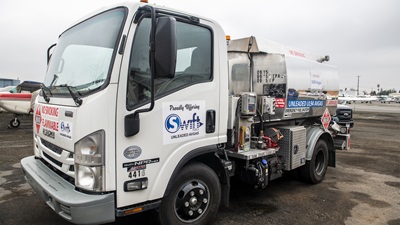Unleaded fuel producers voice optimism, frustration
Congress hears from GAMI, Swift Fuels, AOPA
Swift Fuels has set a three-year timeline for fleetwide approval of a clean-burning, cost-effective unleaded aviation fuel, the company’s president told a congressional subcommittee on July 28.
“We’re working full throttle … toward having our 100-octane unleaded fuel being ready to deploy by middle of … 2023, and then going through a transition period of one to two years before all the fleetwide airplanes are in a position to use it at every single airport,” Swift Fuels CEO and President Chris D’Acosta said at a hearing of the Environment Subcommittee of the House Committee on Oversight and Reform. “All the major distributors … are willing to step up and do their part,” he said. “We believe that we can manage an orderly transition” from leaded to unleaded avgas, he said.

“Swift Fuels works directly with FAA and industry leaders in advocating for a safe and smart transition to unleaded fuel,” D’Acosta noted. “We applaud AOPA for their part in championing these efforts.”
Swift Fuels is the sole provider of UL94 unleaded avgas, currently sold at Reid-Hillview of Santa Clara County Airport in San Jose, California, and other locations. As of January 1, the sale of 100LL fuel is banned at airports in Santa Clara County.
On July 26, UND Aerospace at the University of North Dakota announced that it will fully switch to UL94 and the school's fleet of 100 aircraft are compatible with its use. UND Aerospace said it is the largest public flight school in the United States to fully switch to unleaded avgas.
UL94 can be used by many, but not all, types of aircraft. Those with higher compression engines require fuel with a higher octane rating.
George Braly, co-founder and chief engineer of General Aviation Modifications Inc., told the subcommittee his company’s G100UL unleaded avgas has met all regulatory requirements to obtain a supplemental type certificate.
AOPA President Mark Baker noted in written testimony submitted for the hearing that “Last year, the FAA approved hundreds of additional piston aircraft engine models to burn the 100-octane unleaded avgas developed by General Aviation Modifications Inc. (GAMI). Of the more than 1,800 different engines on the market, GAMI received an STC for approximately 611 engines on [the] FAA’s approved make/model list, issued October 28, 2021.

“This progress is significant, and GAMI continues to pursue [certification] for high compression piston engines that need and use nearly 70 [percent] of 100 octane fuel today.”
However, Braly said the FAA has not signed off on the latest request for STC approval.
Braly voiced frustration with the bureaucratic process pertaining to the STC. “This is a complete solution,” he said of G100UL. “If those certificates had been signed in March, as the law required them to be signed, I feel fairly confident that by sometime in the month of August or the month of September there would be railroad cars of high-octane unleaded aviation gasoline in California, going to airports like Reid-Hillview and San Martin and [flight schools] in Bakersfield, and … Robinson Helicopter in Los Angeles,” which he said is at risk of halting its production if Los Angeles decides to ban the sale of 100LL avgas as Santa Clara County did.

During the congressional subcommittee hearing, Chairman Ro Khanna (D-Calif.) expressed disappointment that neither the FAA nor the Environmental Protection Agency decided to testify in person. “The FAA has chosen a path of delay, holding up the approval of a lead-free alternative fuel for no stated reason,” he said.
While also expressing frustration with the FAA, Braly acknowledged AOPA’s efforts in leading the industry to a lead-free fuel, saying, “No one has done more than AOPA to help move the GA industry forward to an unleaded fuel solution, and they should be commended for their efforts.”




